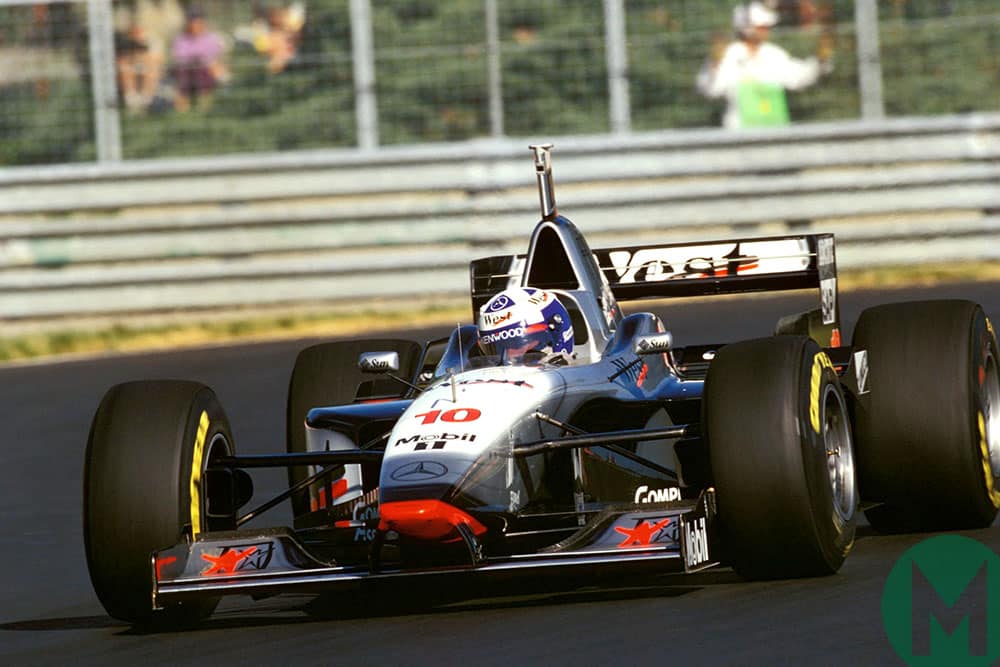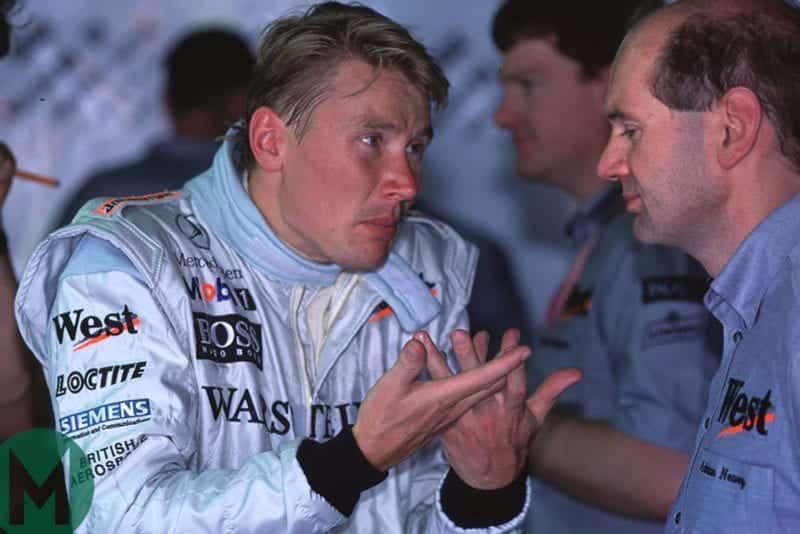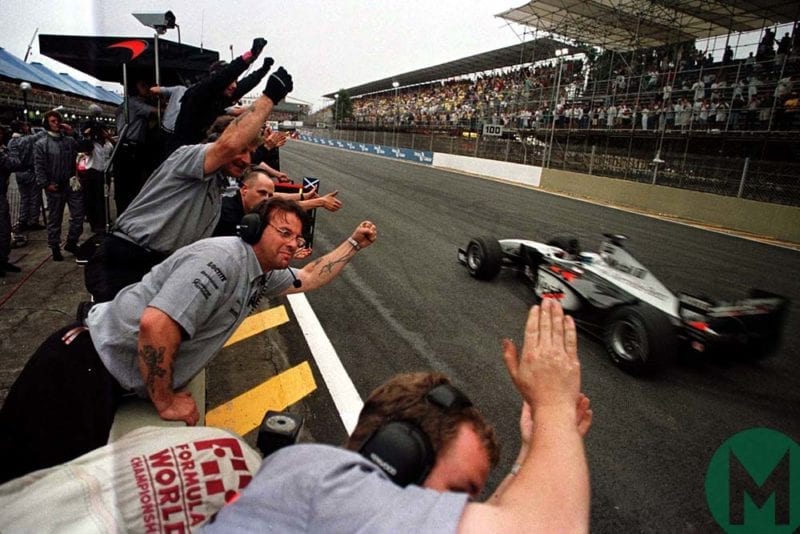Brake-steer McLaren
It’s hard to keep a secret at a GP, especially when there are quick-witted photographers around. When the MP4/12’s unusual pedal-box was photographed, a legality storm brewed

David Coulthard at the Canadian GP 1997, the first race in which the McLaren third pedal system was used
Motorsport Images
In the course of the 1997 Formula 1 season, it emerged that McLaren’s MP4/12 was equipped with a novel brake-steer system. Via an extra pedal, the driver could quell understeer by braking the inside rear wheel to turn the car into the corner. In effect it was a non-automatic version of the stability control systems which by then were being fitted to road cars.
So long as McLaren’s race fortunes were modest (it came fourth in the constructors’ championship that year), the other teams seemed not to care too much. But when McLaren appeared with the much improved MP4/13 in 1998 and romped to victory at the first race, ordure hit the fan. After a vigorous campaign led by Ferrari to get the brake-steer system banned, it was declared illegal by the stewards at the second race in Brazil, and never appeared on the car again.
As a tactic to stem the McLaren tide, it was Canute-like. Mika Hakkinen won the championship, David Coulthard was third, and McLaren easily took the constructors’ title. Instead, the episode raised unwelcome questions about how F1 decides technical matters, and those concerns have re-emerged since.
Neil Oatley, designer of the MP4/12, and Adrian Newey, designer of the MP4/13, talk here of the system and its benefits, and the issues surrounding its ban.
Origins
NO: “It was Steve Nichols’ idea. He suggested it during the winter of ’96/97, we tested it in the spring and introduced it for Canada. There was a worry initially that the drivers might be confused by having that extra pedal, but from the first run they did with it, it came very naturally to them. Mika was already left-foot braking whereas David was dabbling with it but normally using right-foot braking, so they had very different driving styles. But they both adapted to it easily.”
Details
AN: “It was a simple piece of plumbing. All we did was split the rear brake line into two – the T-piece was at the master cylinder rather than at the gearbox – and in one of them, to the inside rear brake, we put an extra master cylinder. If this was inoperative then the rear brakes pumped straight through it, whereas if you operated the extra master cylinder it allowed you to brake the one rear wheel and so steer the car. It may be that others missed that simplicity and made their plumbing more complicated. That’s possibly one reason they didn’t get it to work. The other may be that they were running different brake materials. You need a very progressive brake material that has a flat friction/temperature curve, so that it doesn’t grab. Some other teams used material with higher peak friction but more temperature sensitivity. A driver would have more trouble regulating the brake-steer on that material.”
Benefit
AN: “The system was remarkably powerful. Its worth was circuit-dependent, obviously, but on average I would say it was worth 0.3sec per lap – that’s probably conservative, actually. The biggest effect on set-up was that you could run the car more ‘understeery’, more stable, so that you were less likely to have entry oversteer problems. And you could have better traction because you’d set the car up more towards understeer [less roll stiffness at the rear].”

Mika Hakkinen confers with McLaren-Mercedes technical director Adrian Newey
Motorsport Images
Development
NO: “Most circuits are inherently biased towards left or right corners, so on the ’97 car we chose before each meeting which rear wheel the system should operate on. Because there were always some corners going the other way, the car’s understeer could never be too extreme otherwise it would be hopeless. The switchable system [developed for the MP4-13] gave us a little more freedom in that respect.”
Legality
NO: “We didn’t check the system’s legality with the FIA before racing it because we never thought there was any question about it. It came to light at the Austrian GP, I think, when some pictures of the car showed the inside rear disc glowing and not the front disc. That alerted people. Then at the Nürburgring both our cars had failures and stopped just past the pits. A photographer took a picture inside the cockpit of our pedal arrangement. The FIA looked at the system and couldn’t see any reason for us not to use it, so we continued to for the rest of that year.
“The result is that teams sometimes spend a load of money in the belief that something is OK, only to find it subsequently banned”
Subsequently Paddy Lowe, our Director of Engineering, successfully corresponded with the FIA to explain how our switching-system development would work for future races. Ultimately it was decreed in 1998 that the system constituted three-wheel steering, which was viewed as being the same as four-wheel steering. There was never any doubt in our mind that the rule on four-wheel steering was there to ban the type of system Benetton had run in ’93. But it’s a fact of F1 life that rules made for one reason sometimes interfere with other developments.”
AN: “The issue of who decides the legality of technical innovations in F1 was never settled; if anything the opposite. It was the first of a whole host of examples where the FIA has said that in its opinion something is legal, so you build it and race it, then someone else says that in their opinion it isn’t, and you have to take it off again. Which is quite a frustrating business, as you can imagine. I have sympathy with the FIA because it is possible for a team to try to hoodwink it. But the net result is that teams sometimes spend a load of money in the belief that something is OK, only to find that it is subsequently banned.”

The ingenious braking system may have been banned from the 1998 Brazilian Grand Prix onwards, but that didn’t stop McLaren-Mercedes taking both titles that year
Motorsport Images
